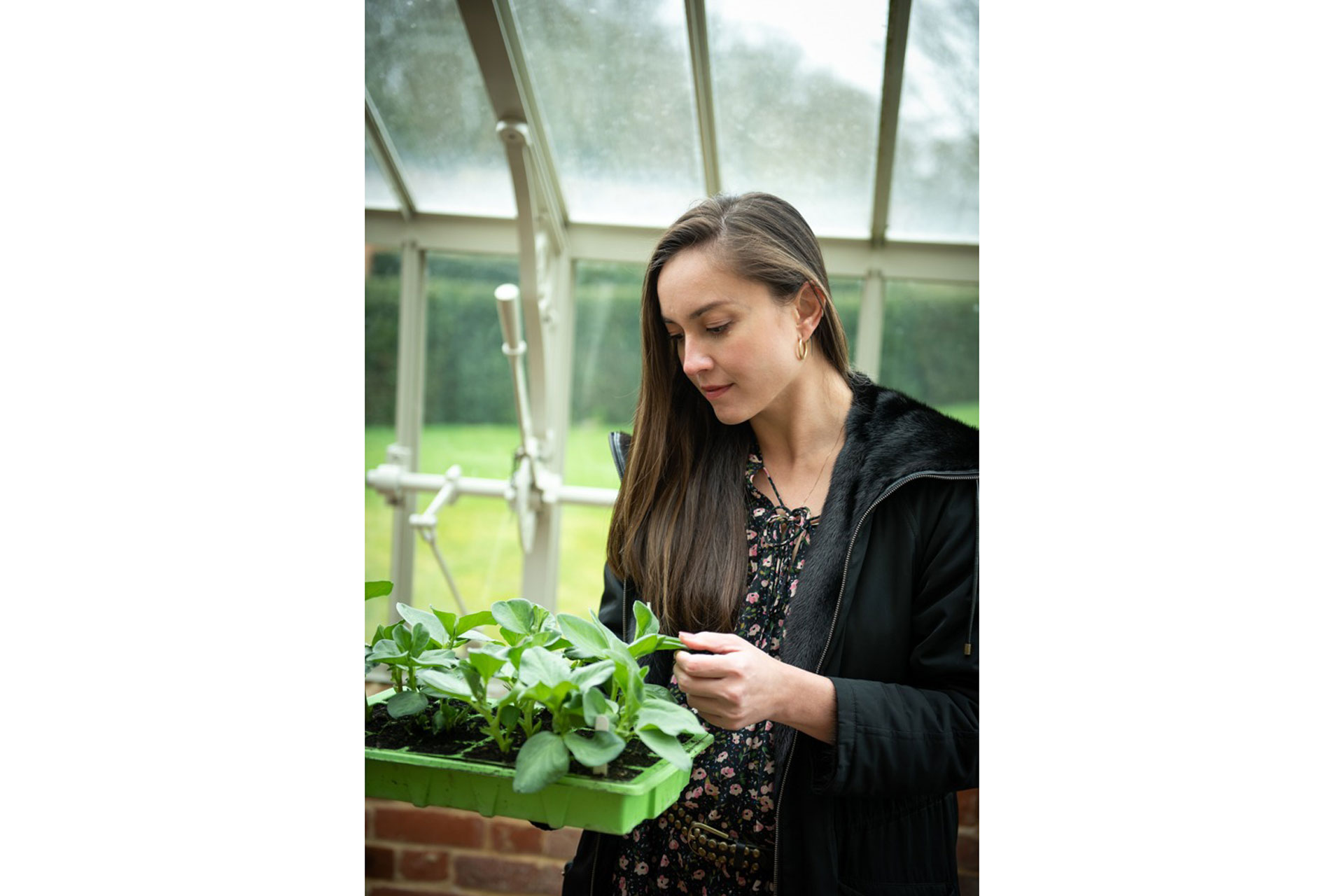Mandy Lieu: New Model Farming
By
4 years ago
Why regenerative farming is the way forward

The one-time model who bought the Duke of Wellington’s former estate, Ewhurst in Hampshire, Mandy Lieu has made the ultimate life change to help protect the environment. Here, she explains why regenerative farming is the way forward.

During lockdown in the UK, more and more consumers are having fresh produce delivered to their door, and sustainability is a factor that sets some suppliers aside from others. After the pandemic, climate change is our biggest challenge in society and the role of agriculture is again under the spotlight, with regenerative farming hotly tipped to help farmers reduce their carbon impact.
Regenerative farming is a sustainable method of agriculture which replenishes nutrients in soil. At its heart, it focuses on topsoil regeneration, aiming to improve or restore soils that have been degraded by rebuilding soil organic matter and increasing soil biology. It allows farmers to use soil in a more efficient way, improving the water cycle and use of carbon reserves. Done well, it captures carbon in soil and aboveground biomass, helping to reverse the accumulation of carbon in our atmosphere.
According to Farm Carbon Toolkit, a vehicle which aims to help farmers reduce their carbon emissions, the agriculture sector is responsible for 9% of all greenhouse gas emissions in the UK. Across the world, the figure is even higher. Together with changing land use and cutting down forests, the agriculture sector accounts for 30% of greenhouse gas emissions globally.
I first heard of regenerative farming when I took over Ewhurst Park Estate, and went looking for experts who could show me how to run a farm that helps to restore the environment, rather than take from it. I met passionate and creative younger farmers, like Tim May, whose passion for soil health extends to digging up and smelling clods of earth, and James Fuller, whose beautiful dairy herd in Wiltshire thrives among butterflies, birds and wildflowers. They showed me how farming can actually improve the soil, and how, with the right approach, even beef cattle could be reared to be carbon-neutral.
I want to follow the example of farms like Fir Farm, which raises native breeds of cattle and sheep, pigs and poultry fed on home grown, organically produced feed. Their system of ‘mob grazing’, which they allocate to their agroforestry projects, as well as their plans for a pioneering mobile abattoir to make slaughtering as humane as possible, are techniques which demonstrate both innovation and sustainability. Meeting all these people didn’t just give me tips on how I’d like to run my farm, they made me feel that I was part of a movement.
The regenerative movement has parallels with the revolution of organic farming. Once associated with hippies and idealists, organic status now requires complex certification and is a major business. The UK’s organic market has seen its highest growth rate in 15 years over the last year, with more than £50 million being spent on food and drink every week. Once big businesses moved in on the organic trend, however, the certification began to mask some questionable practices. Organic does not necessarily equate to sustainable, and the focus of certification is not primarily on reducing carbon emissions.
Even in its infancy, some worry that the regenerative farming movement could make the same mistakes. Jonty Brunyee, another farmer who took a risk on doing things differently when he took over his farm in the Cotswolds, warned me of his concerns about a certification scheme or kitemark for regenerative agriculture. During a visit to FarmEd, an educational facility and model regenerative farm, he told me that handing over responsibility for defining what counts as regenerative farming to big businesses risks diluting the label.
The UK’s Best Authentically Farm To Table Restaurants
Of course, farming is a business, and the development of regenerative farming has been powered by big brands. It is these brands which will ultimately drive change. Natoora was also one of the first companies to champion a regenerative approach. The brand launched its own farm in November of last year to tackle soil depletion and provide sustainable food. It now delivers regeneratively grown fruit and veg direct to homes across the country. With even household names like McDonald’s UK looking at regenerative methods like adaptive multi-paddock grazing for cattle, it is clear that big business is getting in on the act.
It is not clear, though, that all companies seeking to attach a ‘regenerative’ label to their products will be as benign. Any certification scheme in the future should remain true to the vision of farming in a way that gives back to the earth, rather than making it easier for large enterprises to call themselves regenerative.
The movement should not, however, turn its back on big business entirely. If regenerative agriculture is going to save the planet, it needs to be implemented at scale, and that means it needs businesses to back it.
At Ewhurst, I have the unique opportunity of a completely blank canvas to create an innovative regenerative farm over hundreds of acres. I want to test and develop the cutting- edge sustainable practices I’ve seen from farmers all over the country, and use the produce to supply my wholefood kitchen in West London. If big businesses want to follow that example, I think that’s something to be celebrated.
DISCOVER MORE:
Sustainability Trends 2021 / How To Travel More Sustainably



